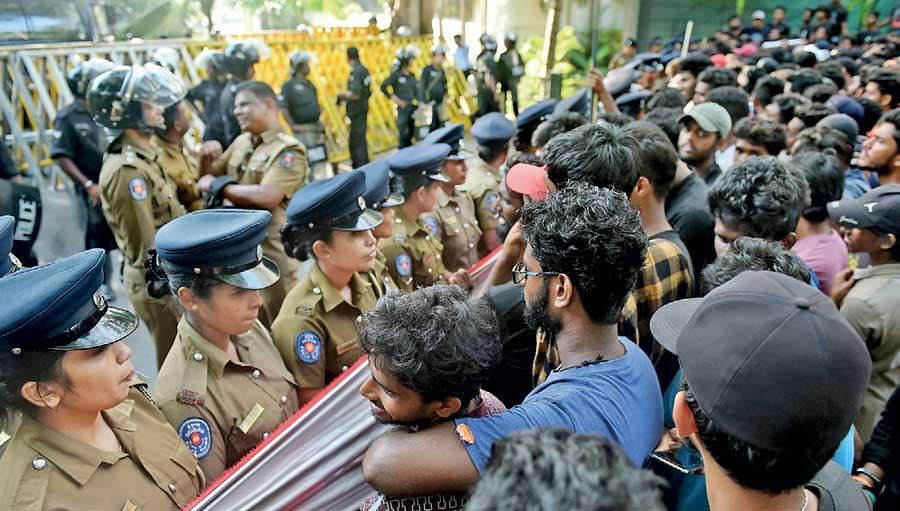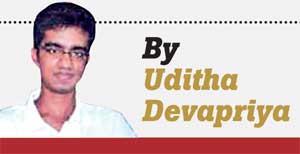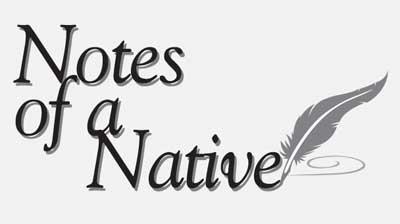Reply To:
Name - Reply Comment

Students engaging in higher studies stage a protest (AFP)
I find it useful to distinguish between two kinds of radicalism; that which tries to eradicate the structural causes of social injustice and that which glosses over such causes and simplifies them, presenting a stark, black-and-white, dichotomised world where injustice is attributed to one institution or one person. I’m not sure whether the latter can be considered radical, but in the interests of keeping matters simple, I’ll leave it there. In any case that shouldn’t bother anyone. Moreover, the dichotomy opens up other differences between the two types. What is important to know is that, in whatever part of the world, the radicals holding the protests, for the most happen, to be those who choose not to see the causes of the problems against which they hold flags and candlelight vigils. 
Even here :-
Artistes, like priests, have widely been considered as fulfilling a social function. In his brilliant study of popular culture in early modern Europe, Peter Burke points out three phases through which that culture evolved. In the first phase, from the 14th to the 16th centuries, popular and elite culture coexisted: the elite and common folk revelled in popular music and drama, while the common people consumed elite culture as interpreted by local artistes. In the second phase, from the 16th to the late 18th centuries, the two separated: the Protestant Reformation and the Catholic Counter-Reformation responded to the rise of the bourgeoisie by distancing the one from the other. By the end of the 18th century, the process was complete for the third phase to take off in the 19th.
The role of the artiste changed during this period. The artist was never a social radical; he was there to entertain and more importantly to entertain a world he was in, and of. Distinctions between his professional and social faces therefore never existed: he could be one, and at the same time he could be the other. That artists, prodigals though they may have been, took part in many of the peasant revolts along with priests is ample evidence of how they participated in secular life. Marx and Engels characterised them as petty bourgeois, but that came much later, at a time when the bourgeoisie were trying to rediscover the popular culture they had abandoned for centuries.
"Religion by now had become a tool of the established classes, and soon followed, barring the occasional exception, the arts. Both reflected, and thrived on, cultural and social change and changes in political economy and philosophy"
Religion by now had become a tool of the established classes, and soon followed, barring the occasional exception, the arts. Both reflected, and thrived on, cultural and social change and changes in political economy and philosophy. The growth of industry led to a paradigm shift in how the West conceived of individual rights; reduced to pleasure and pain, to the principle of profit, to the maximum happiness among the maximum people. Even the most radical artistes from then – in France Voltaire, in England Dickens – couldn’t help but give way to the dominant philosophy: thus Voltaire could champion liberty, yet reject equality; thus Dickens could mock the privileged and condemn the workhouse, yet impose a workhouse ethic on the inmates of the reformatory that he founded for prostitutes.
I am not alone in speculating about these contradictions and I won’t say I have found all the answers. But I see in the Western culture’s distinction between the concrete and the optics, or between the reality and the ideal – a distinction that goes back to Plato and Ancient Greece – a fatal philosophical rupture. Today this rupture continues in the form of the debate between those who argue for positive rights and those who argue against them. In Sri Lanka the debate is between those who seek formal rights – the right, say, to the national anthem being sung in Tamil – and those who seek substantive rights – the right, say, to compulsory free education. Asanga Welikala in an interview with this paper categorised among the latter those who want to embed in the constitution certain taken for granted positive rights (free education being the most glaring and obvious); this, he argued, is a difficult if not dangerous enterprise, because it commits to the constitution a view of social issues that should best be left to the courts rather than be imposed via the legislature. In other words, let the judges who are unelected rule on these substantive rights, instead of the parliamentarians who are.
 To commit such rights to the constitution would be radical. To lambast corruption in not only the State, but also the private sector, which funds corruption in the State, would be radical. To ask for enforcement of substantive solutions, rooted in economics rather than petty ideology –to make sure inequalities in wealth do not mean iniquity for life for the majority – would be radical. The debate is now between those who want to hear the national anthem sung in Tamil and those who want to bring down fertiliser prices and improve agricultural methods so that farmers in the north can enjoy a decent livelihood while they sing that anthem in their tongue. To merge the two, to balance and ensure both, would be radical.
To commit such rights to the constitution would be radical. To lambast corruption in not only the State, but also the private sector, which funds corruption in the State, would be radical. To ask for enforcement of substantive solutions, rooted in economics rather than petty ideology –to make sure inequalities in wealth do not mean iniquity for life for the majority – would be radical. The debate is now between those who want to hear the national anthem sung in Tamil and those who want to bring down fertiliser prices and improve agricultural methods so that farmers in the north can enjoy a decent livelihood while they sing that anthem in their tongue. To merge the two, to balance and ensure both, would be radical.
I have a problem with artists and activists who can’t merge the two, because they tend to give preference to the ideal over the substantive. They want labour rights. They want some form of a right to education, but they don’t seem to be willing to abandon their obsession with elite schools – or cut into the monopoly held by such schools by upgrading and diverting much needed funds to village and outstation schools. Their preferred institutional frameworks seem to be the 13th and 17th amendments. Language rights are fine and well, but if the state of hospitals in Jaffna is no different to those in Kurunegala, and both regions are far behind the metropolitan capital Colombo, can formal equality ever suffice?
"Their preferred institutional frameworks seem to be the 13th and 17th amendments. Language rights are fine and well, but if the state of hospitals in Jaffna is no different to those in Kurunegala, and both regions are far behind the metropolitan capital Colombo, can formal equality ever suffice?"
These questions give rise to still further questions; certainly, it’s futile to expect the answers now. But we must ask them. For instance, why did the same artistes and activists protesting against the illegality of Mahinda Rajapaksa’s premiership in 2018 raise not a hum against the deliberate postponement of the local government and provincial council elections?
Last week I drew a distinction between two kinds of protest artistes in Sri Lanka, and I noted that unfair though it may be, such a distinction has to be made. The split as such was between the likes of Sunil Perera and the likes of Nanda Malini and Gunadasa Kapuge. I find the split to be irreducibly reductionist, but I must make it, because it illustrates vividly the poverty of protest in countries such as ours, retarded by centuries of colonialism, lack of industry, and want of independence. The divide is therefore between artistes who attribute everything to the traditional scapegoat, the politician, and artistes who make us aware of the structural basis for the ills ailing us. It’s not an “I-Don’t-Know-Why” copout that can take us to the solutions to these issues, but a Pawana, a Kampana, a movement nurtured by the grassroots rather than a lumpenproletariat culture that sees in politics the root of all evil.
Here I can only quote Regi Siriwardena: “To think of people as good and bad is, of course, naive; where did the bad people who created the bad politics come from, and how did they corrupt the good?” I rather think it’s a pertinent question, though one that activists and artistes avoid as much as possible – whether through their obtuse generalisations or their inability to see through the scapegoats they have created, I can’t tell. Either way, the message is clear. In Sri Lanka there is a poverty of protest, and radicals who see are outnumbered by those who choose not to. This is not just a national tragedy. This is also our tragedy.